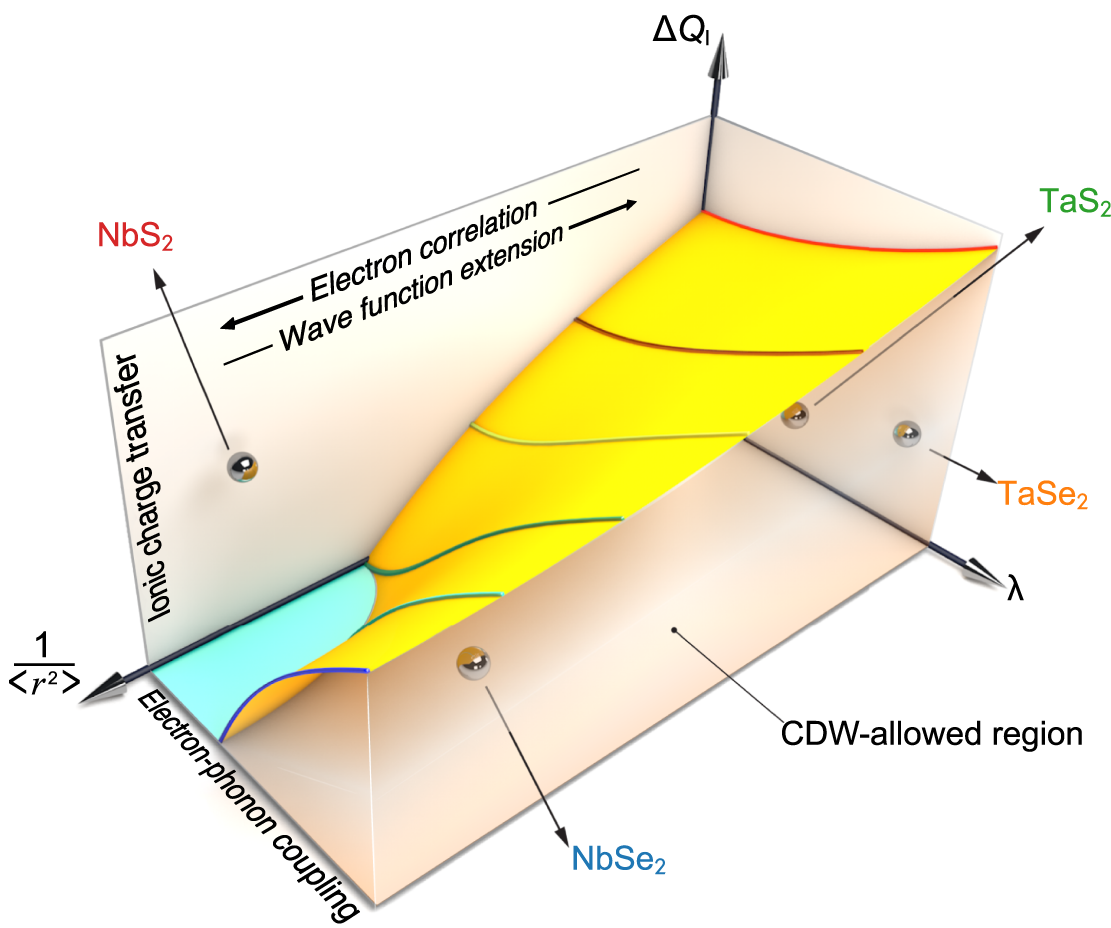Patterns and driving forces of
Charge density wave in Transition metal dichalcogenides
Charge density wave (CDW) is one of the most common, yet least understood, quantum phenomena in condensed matter physics. Occurring in metallic systems, it forms a new ordered state with a distorted lattice structure and modulated charge density distribution. Astonishingly, these modulations emerge in various patterns with disparate dimensional charactersitics, even within the same family of materials. We have recently proposed a general framework [1], that helps us to unify distinct trends of CDW instability. We have applied this to an isoelectronic group of transition metal dichalcogenides, 2H–MX2 (M=Nb, Ta and X=S, Se) which are best known for their puzzling CDW orderings. For example, while NbSe2 exhibits a strongly enhanced CDW order in two dimensions, TaSe2 and TaS2 behave oppositely, with CDW being absent in NbS2 entirely. Our study reveals that such a disparity arises from a competition of ionic charge transfer, electron-phonon coupling, and electron correlation. Despite its simplicity, the approach presented here, in principle, explain dimensional dependence of CDW in any material, thereby shedding new light on this intriguing quantum phenomenon and its underlying mechanisms.

Schematic illustration of the possible phase diagram describing the CDW response in a layered material in terms of ionic charge transfer ΔQI, electron–phonon coupling constant λ, and the spatial extension of electronic wave functions

